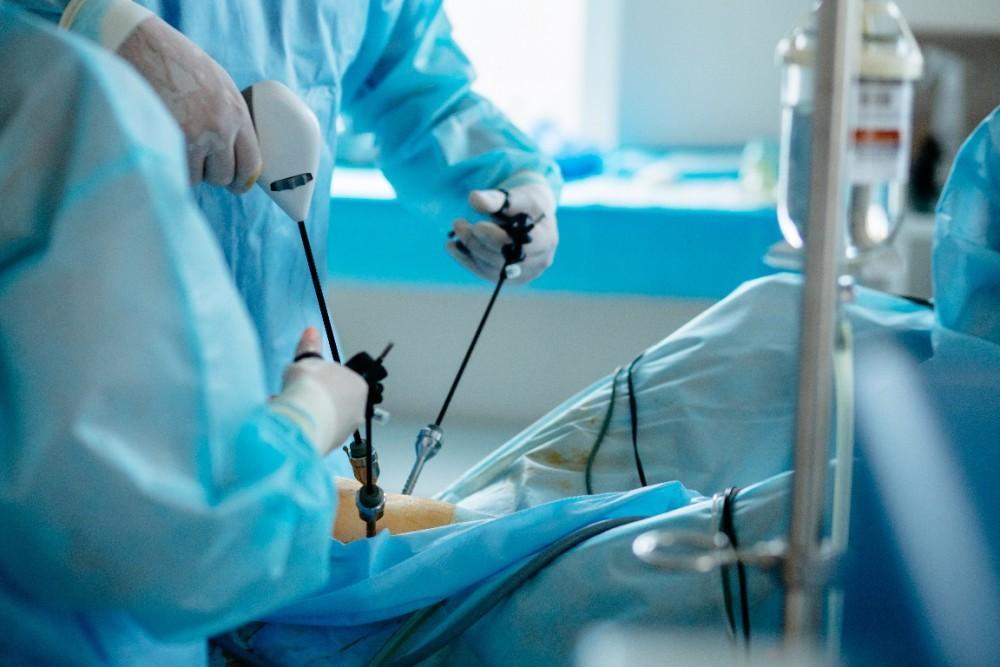Minimally Invasive Treatment for Knee Conditions
Knee arthroscopy is a minimally invasive surgical procedure used to diagnose and treat various knee joint conditions. It involves the use of a small camera (arthroscope) inserted into the knee through tiny incisions, allowing the surgeon to assess and repair damage with precision. Compared to traditional open surgery, arthroscopy offers a quicker recovery time, less pain, and minimal scarring.
Knee arthroscopy is commonly used for conditions such as meniscus tears, ligament injuries, cartilage damage, and inflammation due to arthritis.
Common Conditions Treated with Knee Arthroscopy
- Meniscus Tears – Repairing or trimming damaged cartilage.
- Anterior Cruciate Ligament (ACL) Injuries – Ligament reconstruction.
- Cartilage Damage – Smoothing or removing loose cartilage fragments.
- Patella (Kneecap) Disorders – Correcting misalignment or instability.
- Synovitis – Removing inflamed tissue caused by arthritis or injury.
- Loose Body Removal – Extracting floating bone or cartilage fragments.
Causes & Risk Factors for Knee Injuries Requiring Arthroscopy
- Sports Injuries – Twisting, direct impact, or overuse can damage knee structures.
- Age-Related Wear & Tear – Degenerative changes can lead to cartilage breakdown.
- Repetitive Strain – Jobs or activities that involve kneeling, squatting, or heavy lifting.
- Previous Knee Injuries – Weakness or instability from prior injuries increases the risk of further damage.
Signs & Symptoms Indicating the Need for Knee Arthroscopy
- Persistent knee pain that does not improve with conservative treatment
- Swelling, stiffness, or a feeling of instability in the knee joint
- Clicking, locking, or catching sensation in the knee
- Limited range of motion or difficulty bearing weight
Diagnosis of Knee Conditions
- Physical Examination – Assessing pain, swelling, and mobility.
- MRI & X-rays – Detailed imaging to evaluate soft tissue and bone structures.
- Arthroscopic Evaluation – Direct visualisation of the joint for precise diagnosis.
The Knee Arthroscopy Procedure
- Preparation & Anaesthesia – The patient is given local, regional, or general anaesthesia.
- Small Incisions – Tiny cuts are made to insert the arthroscope and surgical instruments.
- Joint Inspection & Repair – The surgeon examines the knee and performs necessary repairs.
- Closure & Recovery – The incisions are closed with stitches or adhesive strips.
Recovery & Rehabilitation After Knee Arthroscopy
- Initial Recovery Phase (0-2 Weeks) – Rest, icing, and controlled movement.
- Physiotherapy & Strength Training (2-6 Weeks) – Progressive exercises to restore knee function.
- Gradual Return to Activities (6-12 Weeks) – Resuming sports and daily activities with guidance.
- Long-Term Maintenance – Strengthening and flexibility exercises to prevent re-injury.
Why Choose Advanced Orthopaedics for Knee Arthroscopy?
Knee Surgery & Care
Led by Dr Sarbjit Singh, a Senior Consultant Orthopaedic Surgeon, our clinic provides specialised knee arthroscopy procedures tailored to each patient’s needs.
Minimally Invasive & Effective Treatment
Our approach focuses on precision, faster recovery, and minimal disruption to daily life.
Comprehensive Rehabilitation Programs
We provide structured post-surgical physiotherapy to ensure optimal healing and long-term knee health.
Take the Next Step
If you are experiencing knee pain or mobility issues, knee arthroscopy may provide an effective solution. Schedule a consultation with our team at Advanced Orthopaedics to discuss your treatment options and recovery plan.





